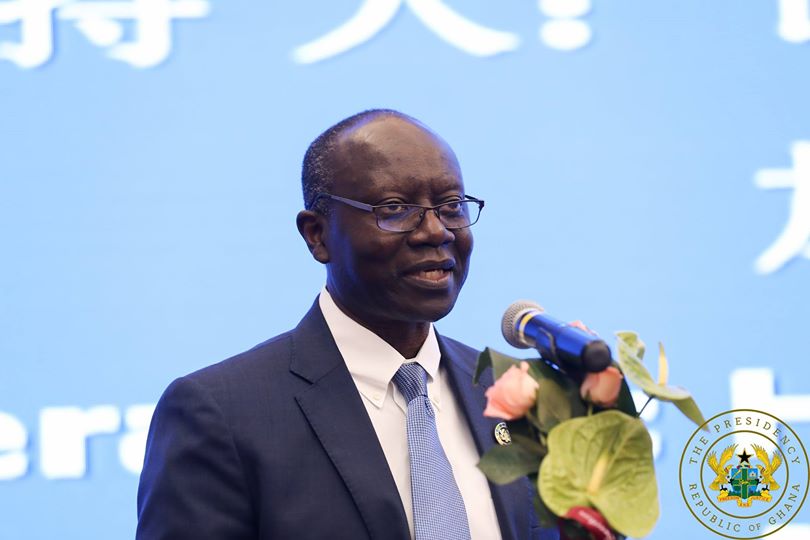Beverage producer Guinness Ghana Limited says it is on track to reach 70 percent local raw material sourcing from Ghanaian farmers.
This follows a research by the Kwame Nkrumah University of Science and Technology which showed that the company has increased its local raw material sourcing from 12 percent to 55 percent.
Speaking to Citi Business News on how the development has positively impacted the lives of farmers, the Corporate Relations Director of Guinness Ghana Limited, Sylvia Owusu-Ankomah stated that over 30,000 farmers have benefited from the initiative.
“Since its inception, Guinness Ghana has grown its percentage of local raw material usage from 12% in 2012 to the 55% this 2019, a firm demonstration of our commitment to the agenda”, she stressed.
According to her, the consistent growth in local raw material uptake has been achieved through significant capital investment to re-engineer plant and equipment, as well as technical and financial support to farmers to improve crop yield.
Background
Guinness Ghana’s Local Raw Material (LRM) intervention started in 2012 in line with Government’s Policy initiative to incorporate the use of local raw materials in the production of our alcoholic and non-alcoholic beverages.
Key Findings of the 2019 LRM Socio-Economic Impact Study
Guinness Ghana’s activities in the maize, sorghum, and cassava value chains have contributed to positive changes for farmers along these value chains.
As a result of the ready and reliable market provided by Guinness Ghana, farmers have increased average acres under cultivation and this has translated into increased yields, labour employment, gross revenues and profits.
Key gains identified
The main categories of stakeholders impacted are farmers, aggregators, processors, input dealers, and traders. Beside smallholder farmers who constitute the bulk of beneficiaries, there are several others who directly and or indirectly have been impacted by the LRM initiative along the three commodity value chains.
It is estimated that about 30,000 smallholder farmers have been impacted by the LRM initiative. With an average household size of 7 across the study regions, it is estimated that 210,000 smallholder farmers and their households have been impacted by the LRM by Guinness Ghana.
Average income from crop sales increased for farmers in the maize and sorghum value chains from 2017 to 2019. The average gross revenue per maize smallholder farmers increased by 126% while farmers engaged in the sorghum value chain increased gross revenue by 120%.
There was a slight decrease of about 3% in gross revenue for farmers in the cassava value chain. Revenue from the target crops made up about 43% of households income in the past year.
The LRM initiative has led to the establishment of some new business entities operating along the value chains. The LRM initiative has led to the establishment of some multi million business entities which have entered into contract to supply maize and sorghum to Guinness Ghana because of the enhancement of the LRM. There are about twenty (20) aggregators/commercial farms spread across the country who are expanding and registering more out-grower farmers to boost their capacity to supply to Guinness Ghana. Other existing companies have also expanded and reformed their production systems.
Increased investments in the maize, sorghum, and cassava value chains. Companies linked to Guinness Ghana under the LRM intervention showed investments in large tracts of land, new technologies and equipment, varietal trials in sorghum, maize and cassava and recruitment of high level human resource to increase their raw material supply to Guinness Ghana.
Investments in quality of life improvements such as investments in children’s education housing, water, sanitation, health and nutrition have increased. 74.5% smallholder farmers own their homes against 67.1% in 2017.
The estimated total income to smallholder farmers across the LRM sourcing regions is estimated at GH¢ 187,710,000 for 2019.
LRM Benefit to Government
Besides the revenue returns to government, GGBPLC’s LRM provides ready offtake to farmers for sorghum, cassava and maize, which directly supports governments Planting for Food and Jobs agenda.
It also supports government’s manifesto policy on providing tax and related incentives for manufacturing businesses in sectors such as agro-processing and light industries among others.
Guinness Ghana’s LRM offtake reduces Ghana’s forex exposure as forex otherwise needed for importation of raw materials is channeled into local sourcing.
As Guinness Ghana expands production capacity, demand for sorghum and other raw materials will increase, thereby creating additional jobs through the opportunities to diversify the supply chain, such as:- malting of sorghum which will create additional job opportunities locally and across the sub-region
– building infrastructure for storage and cleaning of the LRM
– Conversion of cassava starch to High Maltose Syrup
– Opportunities in flavours manufacturing
LRM Benefit to Farmers
Guinness Ghana’s sourcing of local raw material (particularly sorghum, maize and cassava starch) from Ghanaian farmers provides sustained livelihoods to farmers and the supply chain that depends on our LRM sourcing.
From the 2019 LRM Socio-economic Impact Study, Guinness’ LRM sourcing directly employs 30,000 smallholder farmers and creates additional 210,000 jobs in the supply chain, which generates income revenue of over GH¢ 180 million through the chain.
Improvement in livelihood of farmers as a result of ready market for their farm produce – improved access to clean water, sanitation and housing
Conclusion
The LRM initiative has contributed to positive changes for farmers and actors along the maize, sorghum, and cassava value chains. This has led to improved living
source:citibusiness.com




















